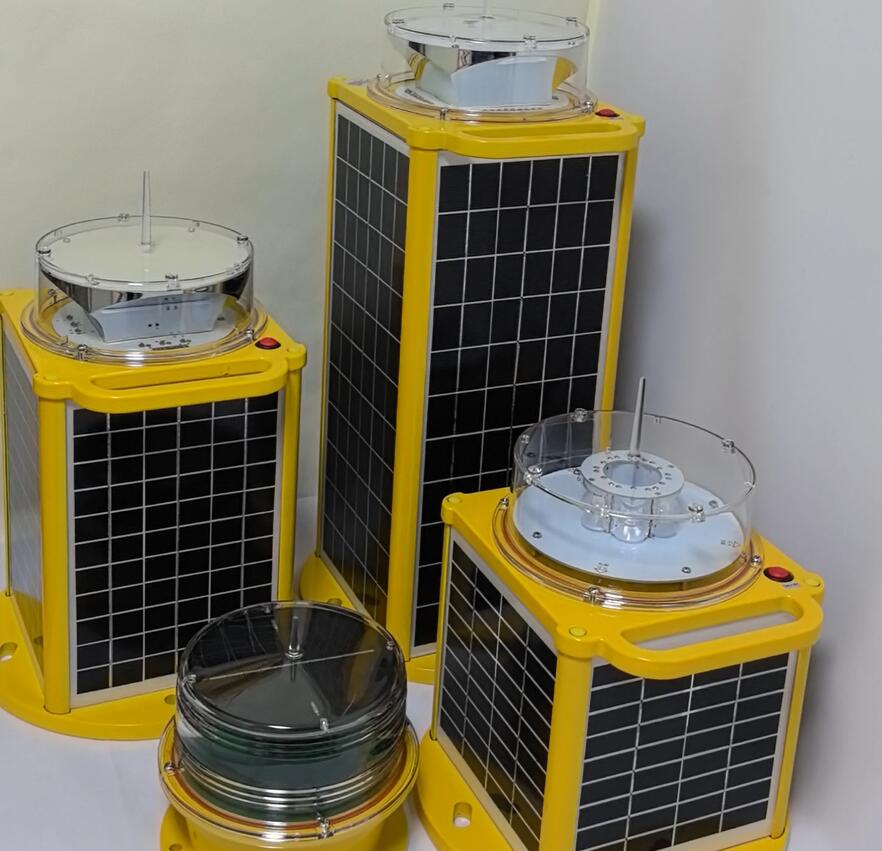Solar Aircraft Warning Light: Enhancing Aviation Safety with Sustainable Technology
The aviation industry is continuously evolving, with safety and sustainability at the forefront of innovation. One critical advancement in this field is the solar aircraft warning light, a device designed to enhance visibility and safety for aircraft, especially in low-light conditions or remote areas. By harnessing solar energy, these warning lights provide a reliable, eco-friendly solution for marking obstacles such as communication towers, wind turbines, and tall buildings. This article explores the significance, functionality, and benefits of solar aircraft warning lights in modern aviation.
The Importance of Aircraft Warning Lights
Aircraft warning lights are essential for preventing collisions between aircraft and tall structures. They serve as visual markers, especially during nighttime or adverse weather conditions, ensuring pilots can identify potential hazards from a distance. Traditional warning lights rely on grid electricity or batteries, which can be unreliable in remote locations. The solar aircraft warning light addresses these challenges by using renewable energy, making it a sustainable and efficient alternative.
How Solar Aircraft Warning Lights Work
The solar aircraft warning light operates through a simple yet effective mechanism:
Solar Panel – The device is equipped with high-efficiency photovoltaic cells that capture sunlight during the day.
Energy Storage – The converted energy is stored in rechargeable batteries, ensuring continuous operation even when sunlight is unavailable.

LED Lighting System – Modern solar aircraft warning lights use bright, long-lasting LEDs that consume minimal power while providing high visibility.
Automatic Sensors – Many models include light-sensitive sensors that activate the warning lights at dusk and deactivate them at dawn, optimizing energy usage.
| solar aircraft warning light |
This self-sustaining system eliminates the need for external power sources, reducing maintenance costs and environmental impact.
Advantages of Solar-Powered Warning Lights
1. Energy Efficiency and Sustainability
Unlike conventional warning lights that depend on fossil fuels or grid electricity, solar aircraft warning lights utilize clean, renewable energy. This reduces carbon emissions and aligns with global efforts to promote green aviation technologies.
2. Cost-Effectiveness and Low Maintenance
Since these lights operate independently of external power, they significantly reduce operational expenses. Their durable design and minimal moving parts ensure long-term reliability with little maintenance required.
3. Enhanced Reliability in Remote Areas
Many aviation obstacles, such as communication towers in rural regions, lack access to consistent electricity. Solar aircraft warning lights provide a dependable solution, ensuring uninterrupted operation regardless of location.
| solar aircraft warning lights |
4. Compliance with Aviation Regulations
Aviation authorities worldwide mandate the use of warning lights on tall structures to prevent accidents. Solar aircraft warning lights meet international safety standards while offering an eco-friendly alternative to traditional systems.
Applications of Solar Aircraft Warning Lights
These lights are widely used in various industries, including:
Aviation – Marking airport structures, control towers, and navigation aids.
Telecommunications – Ensuring visibility of cell towers and broadcast antennas.
Wind Energy – Highlighting wind turbines to prevent collisions with low-flying aircraft.
Urban Infrastructure – Illuminating skyscrapers and bridges for increased aerial safety.
Future Developments
As solar technology advances, solar aircraft warning lights are expected to become even more efficient. Innovations such as:
Higher-capacity batteries for extended operation in low-light conditions.
Smart monitoring systems that allow remote diagnostics and performance tracking.
Integration with IoT for real-time data sharing with air traffic control.
These improvements will further enhance aviation safety while reinforcing sustainability.
The solar aircraft warning light represents a significant leap in aviation safety technology, combining reliability, efficiency, and environmental responsibility. By adopting solar-powered solutions, the aviation industry can reduce its ecological footprint while ensuring the highest safety standards. As renewable energy continues to evolve, these devices will play an increasingly vital role in safeguarding air travel for years to come.
Investing in solar aircraft warning lights is not just a step toward safer skies—it’s a commitment to a greener future.
